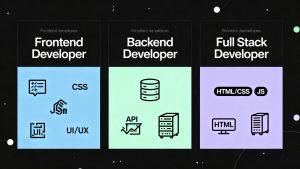In the age of instant digital experiences, mobile applications are central to work, entertainment, online shopping, and beyond. Users expect smooth, secure, and responsive apps across all devices—raising the bar for development teams everywhere.
What Is Full Stack Mobile App Development?
Full stack development covers the entire spectrum—front-end interfaces and back-end systems. Developers build everything from eye-catching user layouts to robust server logic and data management, enabling seamless app experiences on mobile, tablet, and desktop. This versatility allows businesses to deliver integrated, scalable, and maintainable solutions faster and more efficiently.
Key Benefits of Full Stack Mobile App Development
- Increased Profitability: Teams streamline budgets by using versatile developers rather than separate specialists.
- Better Growth Opportunities: Apps easily scale thanks to unified development, supporting rapid expansion.
- Improved Customer Engagement: Cross-platform apps keep users engaged with consistent, responsive experiences.
- Smart Investment: Full stack practices enable modernization, making apps adaptable to future trends.
- Boosted Accessibility: Apps are designed to work across devices, increasing user reach and convenience.
- Real-Time Project Updates: Transparent workflows let clients closely track project progress.
- Data Security: Comprehensive security is baked into both front-end and back-end implementations.
Essential Features of Full Stack Mobile App Development
Successful full stack mobile applications are defined by:
- Automatability: Seamless updates and easy deployment for zero-downtime enhancements.
- Scalability: Efficient architectures built with virtualization and resilient data management for future-proof growth.
- Usability Testing Loops: Continuous feedback, session tracking, and UI monitoring to refine user experience.
- Accessibility & Localization: Features supporting diverse user needs, languages, and accessibility requirements.
Phases of Full Stack Mobile App Development
Development follows a multi-phase process:
- Planning and Design
Define requirements, create wireframes, and establish user-oriented UIs and workflows. - Front-End Development
Deploy HTML/CSS and JavaScript frameworks such as React and Angular for engaging interfaces. - Back-End Development
Leverage server-side scripting with Python, Ruby, or Node.js. Manage databases and connect APIs for robust data operations. - User Experience (UX)
Iterative feedback, user-centered design, and intuitive navigation elevate usability. - Testing and Integration
Employ unit, integration, and user testing to guarantee seamless functionality. - Deployment and Maintenance
Launch securely, monitor performance, and update regularly for long-term reliability.
Each phase is tightly woven for resilient, scalable, and user-centric results.
Top Full Stack Mobile App Development Services
Industry-leading development companies offer:
- iOS App Development: Native Apple ecosystem solutions.
- Android App Development: Scalable apps for extensive user bases.
- Wearables & Embedded Software: Tailored apps for devices like smartwatches and IoT hardware.
- Native Mobile Apps: High-performance, device-optimized apps.
- Cross-Platform Apps: Single codebase, multiple platforms, faster launches.
- Progressive Web Apps (PWAs): Browser-based applications for instant access.
- Enterprise App Development: Secure, feature-rich apps for business productivity.
Conclusion
Full stack mobile app development empowers businesses to meet the ever-rising demands for rich, responsive, and secure experiences across devices. Mastery of full stack technologies not only enhances development agility but also opens new opportunities for innovation and growth. For developers and organizations ready to lead in 2025, embracing full stack expertise is a strategic advantage.
Read more such articles from our Newsletter here.



